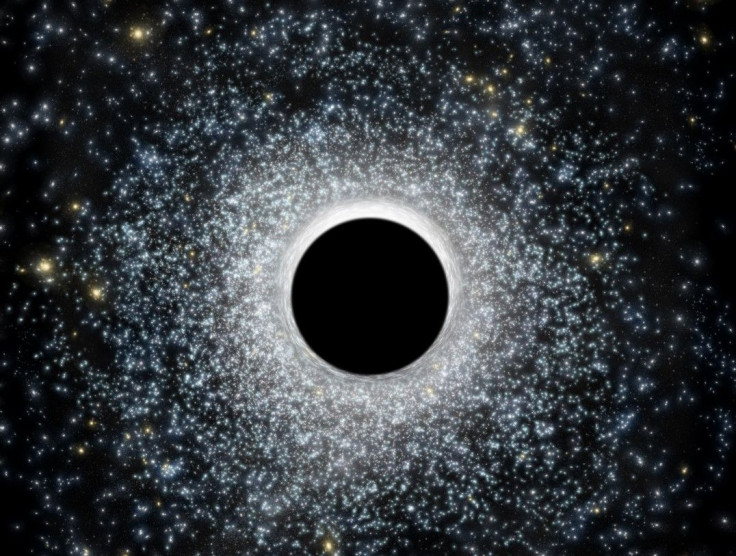Black Hole ‘Missing Link’ Found? Astronomers Discover Best Evidence Yet Of An Intermediate-Mass Black Hole

If we sat down and made a list of the weirdest objects in our universe, black holes would definitely feature somewhere near the top. These objects, formed as a result of gravitational collapse of massive stars, are regions where space-time is so warped that not even light can escape their gravitational wells.
All black holes discovered so far fall in one of the two categories — stellar mass black holes, which have masses a few times that of the sun, and supermassive black holes, which inhabit the centers of most galaxies and have masses of anywhere between a few million and a few billion suns.
Astronomers believe that a third class — intermediate-mass black holes (IMBHs) — also exist. However, a conclusive proof for the existence of such objects, which are estimated to have masses ranging from 100 to 10,000 suns, has been hard to come by.
A team of researchers has now revealed new evidence that an intermediate-mass black hole is hiding at the center of a globular star cluster located 13,000 light-years from Earth. If such an object does exist, it could provide vital clues to how supermassive black holes form and evolve.
“We want to find intermediate-mass black holes because they are the missing link between stellar-mass and supermassive black holes,” Bulent Kiziltan from the Harvard-Smithsonian Center for Astrophysics, who was involved in the research, said in a statement. “They may be the primordial seeds that grew into the monsters we see in the centers of galaxies today.”
According to the researchers, this particular IMBH is located in the center of a 12 billion-year-old star cluster named 47 Tucanae, where its gravity is affecting the motion of stars.
“The new research relies on two lines of evidence. The first is overall motions of stars throughout the cluster. ... An IMBH at the cluster's center acts like a cosmic 'spoon' and stirs the pot, causing those stars to slingshot to higher speeds and greater distances. This imparts a subtle signal that astronomers can measure,” the Harvard-Smithsonian Center for Astrophysics explained in the statement. “The second line of evidence comes from pulsars, compact remnants of dead stars whose radio signals are easily detectable. These objects also get flung about by the gravity of the central IMBH, causing them to be found at greater distances from the cluster's center than would be expected if no black hole existed.”
Combined with computer simulations of stellar motions, this points toward the existence of an IMBH of roughly 2,200 solar masses within the cluster.
© Copyright IBTimes 2024. All rights reserved.






















